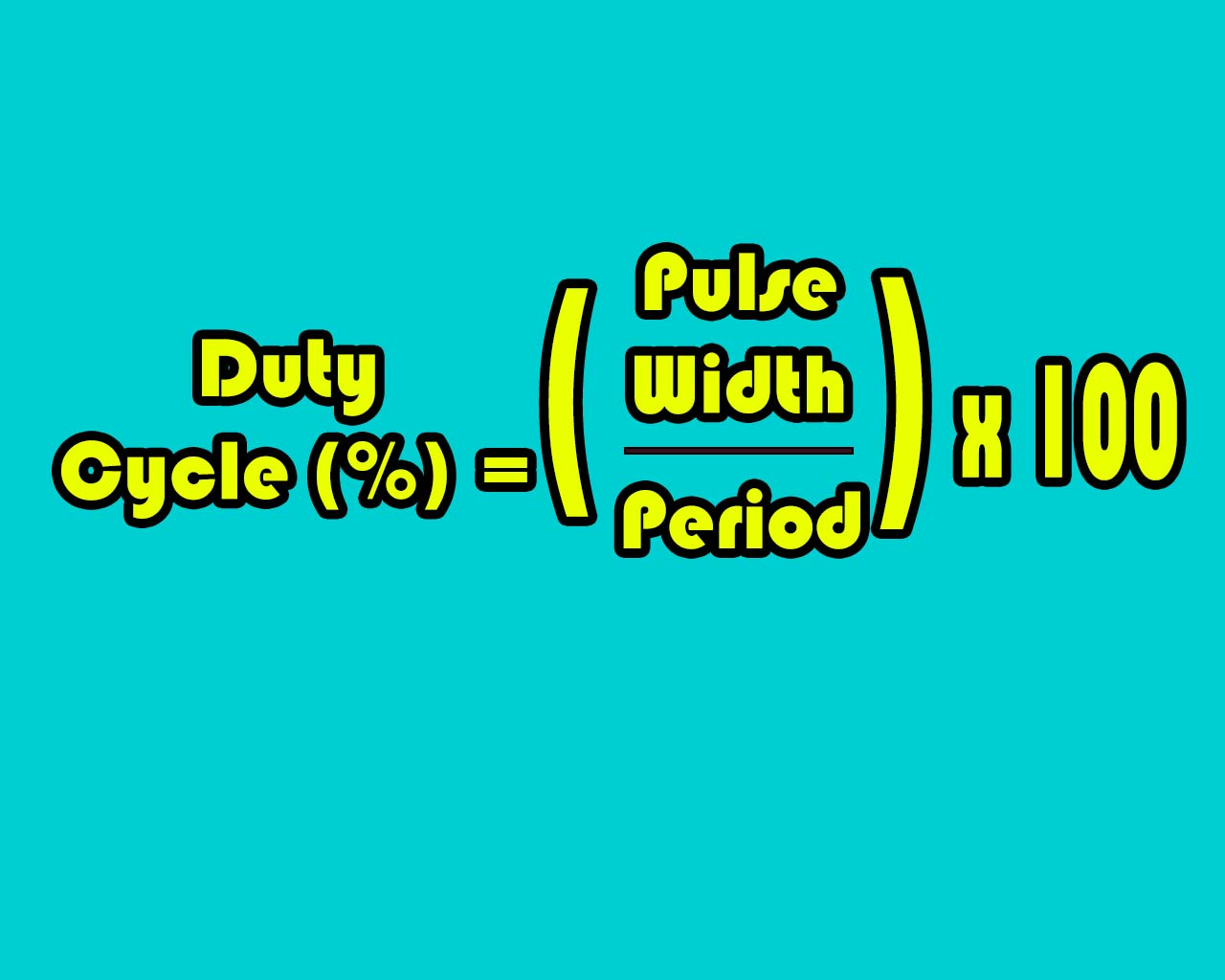Mastering Duty Cycle Formula: A Comprehensive Guide 2024

Understanding the duty cycle formula is essential in various fields where precise control of system activity is crucial. In this article, we will discuss the concept of duty cycle, its formula, applications, and real-world examples and provide you with a comprehensive understanding of this fundamental principle.
Duty Cycle Formula Concept:
At its core, the duty cycle represents the fraction of time a system spends in its “on” state compared to its complete cycle. This concept is particularly relevant in dealing with periodic waveforms like square waves, commonly encountered in electronics and machinery.
Units Matter:
Before applying the duty cycle formula, it’s imperative to ensure uniformity in measurements. Always use the same units (seconds, milliseconds, etc.) for both pulse width and period to maintain accuracy in your calculations.
Basic Formula:
The go-to formula for duty cycle calculation is simple yet powerful: Duty Cycle (%) = (Pulse Width / Period) x 100%. This formula provides the percentage of time the system is actively in its “on” state, offering a quick and effective metric for system analysis.
Pulse Width vs. Period:
Distinguishing between pulse width and period is crucial. Pulse width is the duration the system is “on” within one complete cycle, while the period encompasses the total time of the entire cycle, including both “on” and “off” phases.
ALSO READ: Braking Resistors: Complete Overview And Reliable Guide For Engineers in 2024
Equivalent Formula:
An alternative representation of duty cycle is Duty Cycle (%) = (On Time / (On Time + Off Time)) x 100%. This formula is particularly useful in scenarios with varying on and off durations within a cycle.
Applications:
The duty cycle finds application in diverse fields, such as electronics (PWM control, LEDs), motors (operating time), engines (duty cycle limits), and more. It is a main parameter for ensuring best performance in various systems.
Interpretation:
A 50% duty cycle, where the pulse width is half the period, signifies equal time spent in “on” and “off” states. Higher duty cycles imply more “on” time, and conversely, lower duty cycles indicate increased “off” time.
Beyond Square Waves:
While the duty cycle formula is commonly associated with square waves, its adaptability allows for analysis of other periodic waveforms with defined “on” and “off” periods, broadening its utility.
Real-world Examples:
Duty cycle formula has a lot of practical applications. Understanding it is key to interpreting LED brightness controlled by PWM, motor speeds adjusted by changing “on” times, and the operation of compressors within specified cycles.
Further Exploration:
For better understanding, explore duty cycle formula applications specific to your field of interest. This exploration will enhance your ability to choose the appropriate formula for your specific situation.
Conclusion:
Mastering the duty cycle formula is not only about calculations. It’s also about understanding the fundamental concept of active vs. inactive time. With this knowledge you can optimize the performances of various system. Remember, the duty cycle formula is a powerful tool – use it wisely.
ALSO READ: Switching Power Supplies: Expert Guide And 9 Key Benefits





